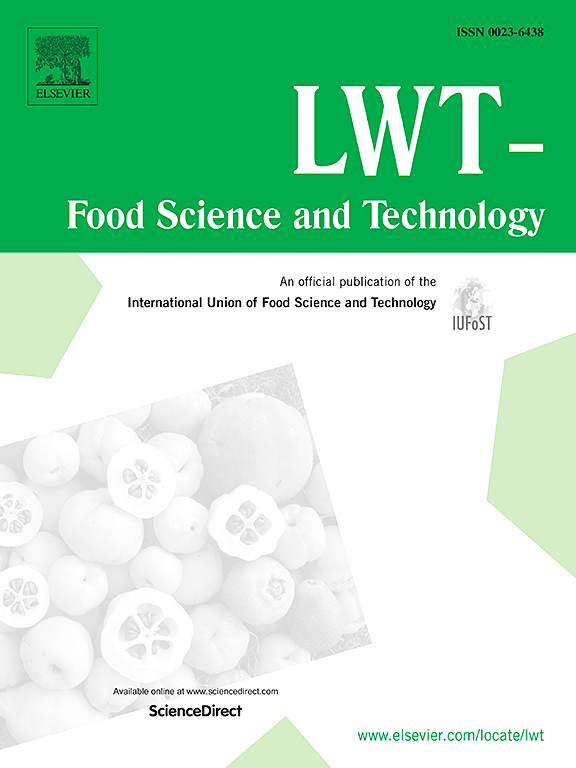针对不同烹饪方法和温度的鸡胸肉最佳烹饪预测建模
IF 6
1区 农林科学
Q1 FOOD SCIENCE & TECHNOLOGY
引用次数: 0
摘要
餐饮服务业的发展和消费者对健康的日益关注,推动着人们努力优化烹饪过程。目前,专业烤箱仅依靠温度探头来监控烹饪过程并确保安全,但这些探头的定位不够精确。本研究旨在建立一个数学模型,通过将感官质量与安全要求相匹配来预测鸡胸肉的最佳烹饪时间。研究考虑了三种不同温度下的烤箱烹饪方法(烧烤,T = 240、260、280 °C;强制对流,T = 150、170、190 °C;蒸煮,T = 80、95、120 °C,相对湿度 = 100%),并监测了烹饪过程中质量指标(烹饪损失、颜色和质地)的变化以及安全要求。通过数据动力学模型计算出活化能(Ea)。根据鸡胸肉烹饪过程中最敏感的质量指标(即烹饪损失)的活化能,开发并验证了预测模型。最佳烹饪时间被预测为烹饪损失演变和温度的函数。在烤箱内使用在线传感器(即天平)来监测参考质量指标的变化,可以加强对烹饪过程的控制并改进餐饮设备。本文章由计算机程序翻译,如有差异,请以英文原文为准。

Predictive modeling for optimal chicken breast cooking across diverse methods and temperatures
The expansion of food service and rising consumer concerns about wellness are driving efforts to optimize cooking processes. Currently, professional ovens rely solely on temperature probes to monitor cooking and ensure safety, but these probes lack precision in positioning. This study aimed to develop a mathematical model to predict the optimal cooking time for chicken breast by matching sensory quality with safety requirements. Three different oven cooking methods at three different temperatures were considered (grill, T = 240, 260, 280 °C; forced convection, T = 150, 170, 190 °C; sous vide, T = 80, 95, 120 °C, RH = 100%) and evolution of quality indices (cooking loss, color and texture) were monitored over the cooking process, together with safety requirements. Activation energies (Ea) were computed thanks to data kinetic modeling. Predictive models based on Ea of the most sensitive quality index (i.e cooking loss) of chicken breast cooking were developed and validated. The optimal cooking time was predicted as a function of cooking loss evolution and temperature. The employment of an online sensor, i.e. a balance, inside the oven, to monitor changes in the reference quality indicator could enhance the control of the cooking process and improve food service equipment.
求助全文
通过发布文献求助,成功后即可免费获取论文全文。
去求助
来源期刊

LWT - Food Science and Technology
工程技术-食品科技
CiteScore
11.80
自引率
6.70%
发文量
1724
审稿时长
65 days
期刊介绍:
LWT - Food Science and Technology is an international journal that publishes innovative papers in the fields of food chemistry, biochemistry, microbiology, technology and nutrition. The work described should be innovative either in the approach or in the methods used. The significance of the results either for the science community or for the food industry must also be specified. Contributions written in English are welcomed in the form of review articles, short reviews, research papers, and research notes. Papers featuring animal trials and cell cultures are outside the scope of the journal and will not be considered for publication.
 求助内容:
求助内容: 应助结果提醒方式:
应助结果提醒方式:


